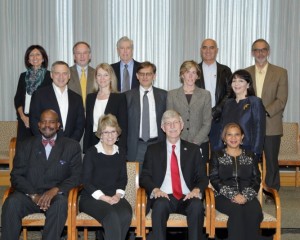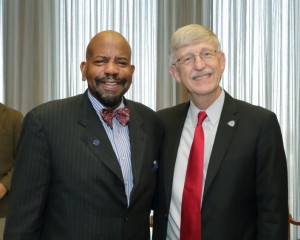On February 18, we were honored to have Edward Botchwey, associate professor of biomedical engineering at Georgia Tech, as the first speaker in the HEAL Seminar Series. Dr. Botchwey delivered a talk entitled “Engineering Immunologically Smart Biomaterials for Regenerative Medicine.”
Ed was one of my graduate students at Drexel who later moved with me to the University of Virginia. He received his Ph.D. from the University of Pennsylvania in 2002. After completing a United Negro College Fund/Merck sponsored postdoctoral fellowship at the Wistar Institute, he became an associate professor in the both biomedical engineering and orthopaedic surgery at the University of Virginia. In 2009, Ed was selected by the White House Office of Science and Technology Policy to receive the 2009 Presidential Early Career Award for Scientists and Engineers (PECASE). It is the highest honor bestowed by the United States government on science and engineering professionals in the early stages of their independent research careers.
The Botchwey Laboratory at Georgia Tech takes a multidisciplinary approach for the improvement of tissue engineering therapies through study of microvascular remodeling, inflammation resolution, and host stem cells.
We look forward to bringing other innovative research leaders to speak as part of this seminar series here at UConn Health.
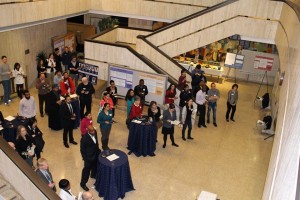
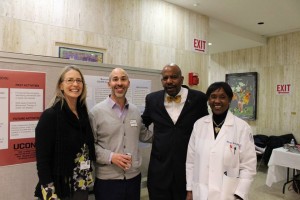 Last month, the Connecticut Institute for Clinical and Translational Science (CICATS) held its first annual “Celebration of Excellence in Research” for its 17 Core Interest Groups (CIGs).
Last month, the Connecticut Institute for Clinical and Translational Science (CICATS) held its first annual “Celebration of Excellence in Research” for its 17 Core Interest Groups (CIGs).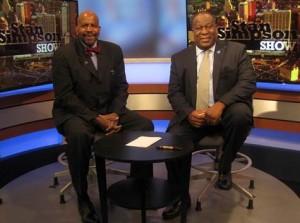 Last month, Stan Simpson, host of “The Stan Simpson Show” on Fox CT, invited me to be a guest on his show for the second time. During the interview, I explained our current research initiative named “Hartford Engineering A Limb” (HEAL) at the Institute for Regenerative Engineering. The project’s goal is to regenerate a human knee in seven years and a whole limb in fifteen. The field of regenerative engineering is still in its infancy, and through the HEAL project, we are hoping to utilize this new approach to bring life-changing breakthroughs to patients. The interview can be seen on the web, please visit the following link:
Last month, Stan Simpson, host of “The Stan Simpson Show” on Fox CT, invited me to be a guest on his show for the second time. During the interview, I explained our current research initiative named “Hartford Engineering A Limb” (HEAL) at the Institute for Regenerative Engineering. The project’s goal is to regenerate a human knee in seven years and a whole limb in fifteen. The field of regenerative engineering is still in its infancy, and through the HEAL project, we are hoping to utilize this new approach to bring life-changing breakthroughs to patients. The interview can be seen on the web, please visit the following link: